Key takeaways:
- Inclusive celebrations are essential for recognizing diverse backgrounds and fostering open communication among participants.
- Embracing diversity enriches experiences, fosters respect, and creates a sense of belonging within communities.
- Choosing a relatable theme enhances inclusivity, allowing shared stories and traditions to connect participants.
- Community involvement in celebrations cultivates connections and encourages shared cultural expressions, making events more meaningful.
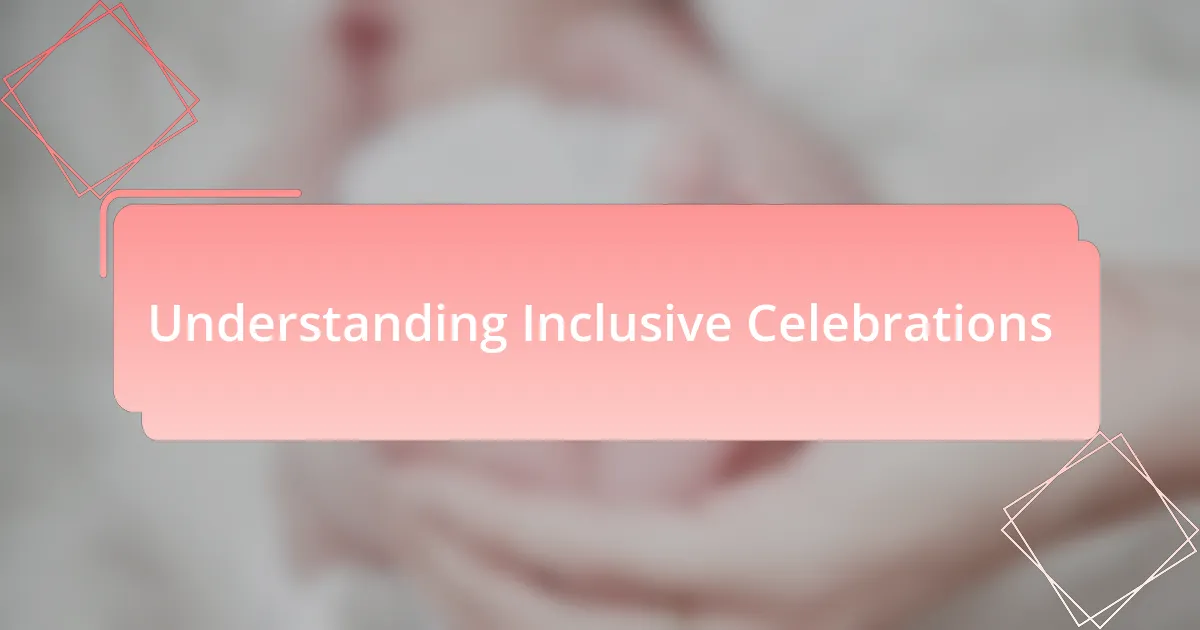
Understanding Inclusive Celebrations
Understanding inclusive celebrations means recognizing the diverse backgrounds and experiences of all participants. I recall a time when I invited friends to a gathering that unintentionally excluded a few. It hit me hard when I realized I hadn’t considered their dietary restrictions or cultural preferences. By simply asking what everyone needed for the event, I learned that inclusion starts with open communication and genuine care.
It’s crucial to think about the various ways people celebrate and how we can embrace them. Have you ever noticed how traditions can differ significantly? During one Mother’s Day celebration, I made an effort to incorporate activities from multiple cultures, making sure everyone felt represented. Seeing the joy on my friends’ faces as they shared their traditions was a powerful reminder that celebrations can unite us when we’re inclusive.
Inclusive celebrations also allow us to break down barriers and foster deeper connections. I once hosted a brunch where we shared stories about our mothers, and it emerged as a beautiful platform for empathy and understanding. This experience taught me that by creating space for everyone’s voice, we not only celebrate the occasion but also nurture relationships and strengthen community bonds.
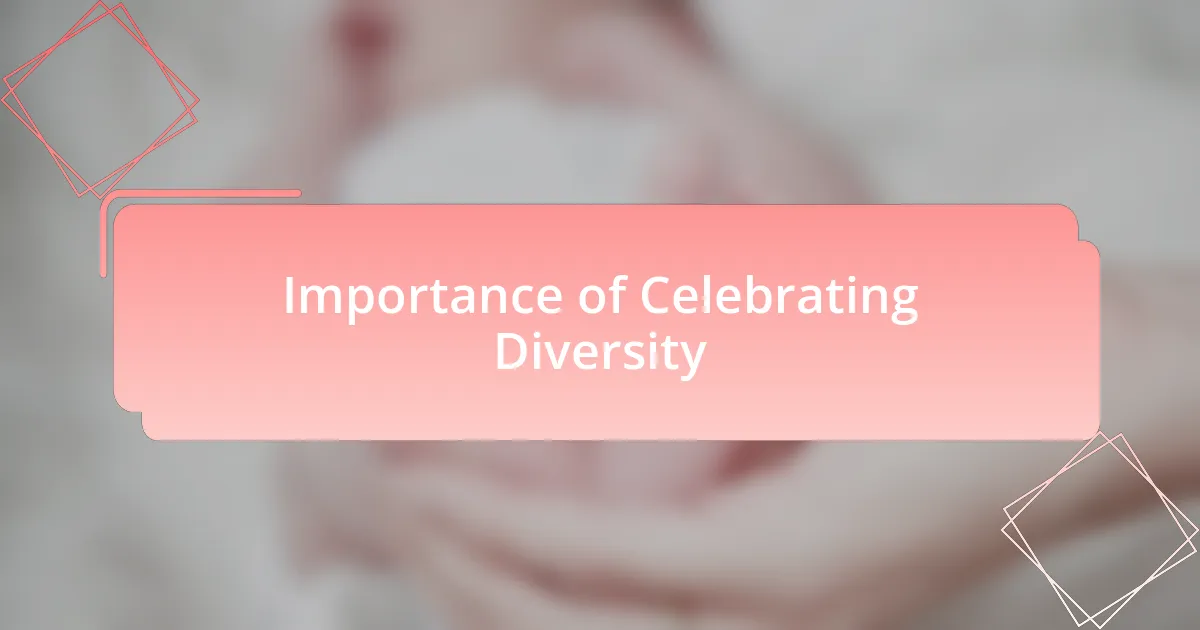
Importance of Celebrating Diversity
Celebrating diversity is essential because it enriches our experiences and broadens our perspectives. I remember attending a holiday gathering where friends shared personal stories from their cultural backgrounds. That moment opened my eyes to the beauty of differing traditions, making me wonder how many stories go untold in conventional celebrations.
Moreover, embracing diversity during celebrations fosters inclusivity and respect. I once coordinated a baby shower that highlighted the varied heritages of the mothers-to-be. By incorporating traditional crafts and foods from their cultures, the event transformed into a vibrant tapestry of shared joy and excitement. It made me realize how inclusivity can amplify joy—did I think of all the unique voices that could enhance the experience? Absolutely.
Finally, inclusive celebrations create a sense of belonging and unity. I hosted a neighborhood potluck for a local holiday, encouraging families to bring dishes that represented their backgrounds. Witnessing people bond over their unique recipes fostered friendships and built a supportive community. Isn’t it amazing how food and celebration can weave together diverse lives into one shared narrative? Each gathering can be an opportunity to learn, appreciate, and embrace one another.
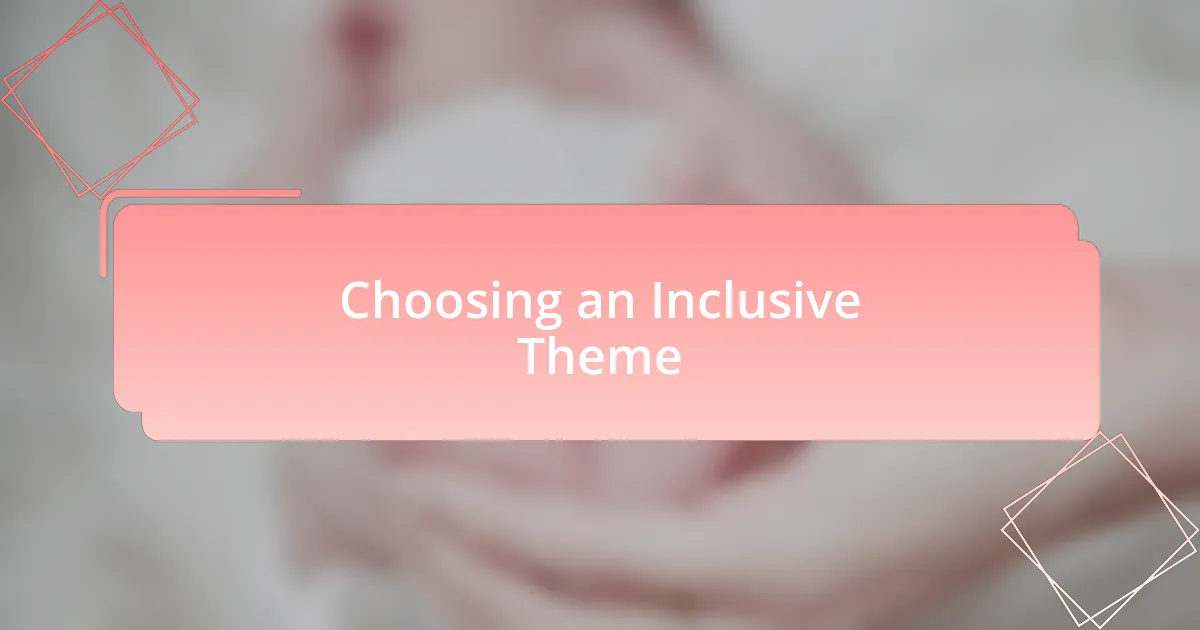
Choosing an Inclusive Theme
Choosing a theme that resonates with a wide array of cultural backgrounds is vital for creating an inclusive celebration. For instance, when I organized a Mother’s Day brunch, I chose a theme centered on “Nurturing Love Across Cultures.” This theme not only highlighted the universal nature of motherhood but also allowed guests to share stories and traditions from their own backgrounds. It was fascinating to hear how similar the core values were, despite the diverse customs.
In another instance, I experimented with a “Cultural Mosaic” theme for a family reunion. Each family member was encouraged to showcase their heritage through attire, music, and food. As we celebrated, I felt a deep connection to my relatives as I witnessed their pride in sharing their unique backgrounds. Have you ever considered how a single theme can weave such a rich narrative about who we are?
Ultimately, the theme sets the tone for the entire event. I remember feeling inspired when one friend suggested a theme of “Celebrating Our Roots,” pushing us to explore the history and traditions of the mothers in our lives. This approach prompted engaging conversations and not only strengthened bonds but also educated us about each other’s heritages, making everyone feel valued. Isn’t it rewarding when an event becomes a platform for learning and connection?

Creating an Accessible Website
When I think about creating an accessible website, it’s crucial to prioritize user-friendly navigation. I once helped design a site for a local charity, and we ensured that all menus were clearly labeled and easy to find. Have you ever faced the frustration of searching for information on a poorly organized site? Streamlined navigation not only makes it easier for everyone but also significantly enhances the overall user experience.
Another important aspect is ensuring that the website is compatible with screen readers. During my time volunteering for a project, I learned firsthand how vital this feature is for visually impaired users. It was a revelation to realize how simple adjustments, like using descriptive alt text for images, can empower individuals to engage fully with the content. Can you picture how much more connected someone might feel when they can easily access the same information as everyone else?
Additionally, color contrast plays a key role in accessibility. I remember revisiting a friend’s blog and recommending that they adopt high-contrast colors for their text and backgrounds. This small change not only improved readability but also made a significant impact on users with visual impairments. Isn’t it amazing how thoughtful details can transform a website from ordinary to truly welcoming?

Highlighting Diverse Celebratory Ideas
When I brainstorm diverse celebratory ideas for occasions like Mother’s Day, I find it enriching to draw inspiration from various cultures. A few years back, I attended a Diwali-inspired celebration, and it struck me how unique traditions could enhance the typical gift exchanges we often see. Can you imagine incorporating vibrant rangoli designs or traditional sweets into a Mother’s Day gathering? It’s these little cultural touches that create a richer, more inclusive experience.
Another idea that has worked well for me is inviting contributions from all family members, regardless of age or background. One Mother’s Day, I organized a storytelling session where each person shared a memory or lesson learned from their mother. This activity fostered deep connections and allowed every voice to be heard, making the event feel more special. Have you ever noticed how memories can bridge generations?
I also believe in celebrating the diverse relationships people have with maternal figures. For instance, hosting a brunch that honors not just biological mothers but also grandmothers, stepmothers, and those who nurture us in different ways allows everyone to feel seen. I remember a Mother’s Day event where we created a “Wall of Appreciation,” where attendees could post notes of gratitude to their mentors and caregivers. It was heartwarming to see the joy this simple act brought to so many.
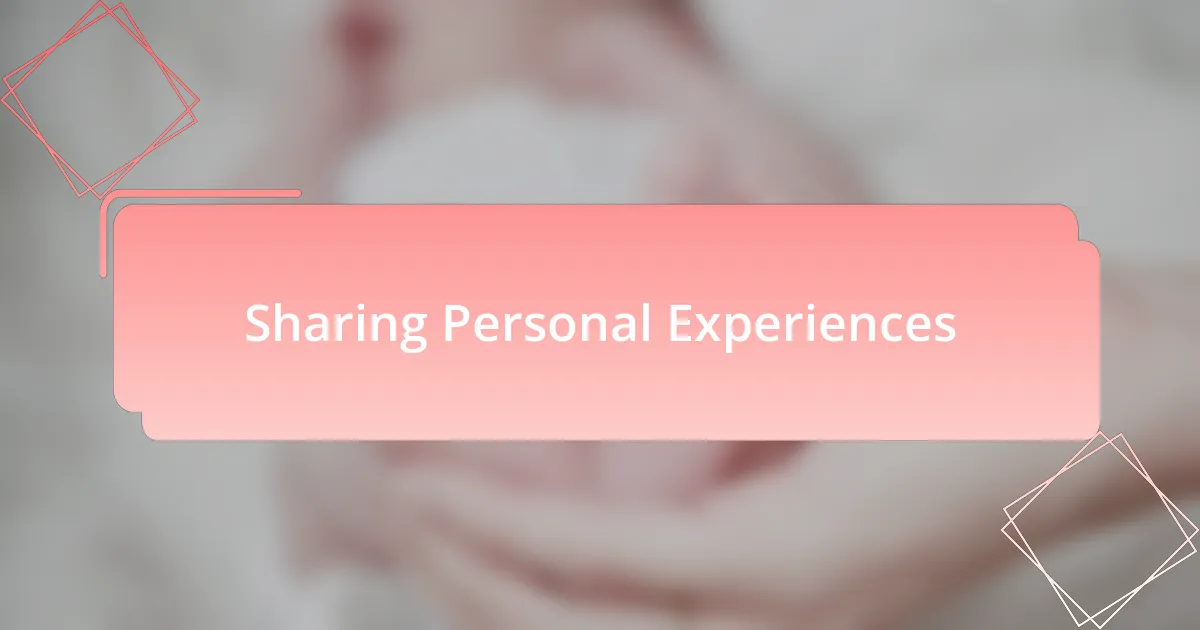
Sharing Personal Experiences
One time, I decided to host a Mother’s Day gathering that emphasized sharing personal stories, and it turned out to be incredibly moving. Each guest brought a photo and a tale about their maternal influences, which transformed our celebration into a heartfelt tapestry of experiences. It made me realize how powerful it is to revisit those memories; they connect us and deepen our appreciation for one another.
As I listened to my aunt recount her journey as a mother, I could feel the emotions in the room shift. Her story wasn’t just about her challenges but also about resilience and love. I found myself asking, “What have I learned from my own experiences?” Reflecting on my path helped me bond with others in unexpected ways, igniting conversations that ranged from laughter to tears.
I believe sharing personal experiences is essential in making any celebration more inclusive and relatable. For example, during our last Mother’s Day brunch, we facilitated a moment for everyone to share what mothering means to them, regardless of their relationship with their biological mothers. The stories were varied but strikingly similar in themes of love and sacrifice, reminding us of our shared humanity. Have you ever noticed how stories can create a nurturing atmosphere, drawing us closer together?
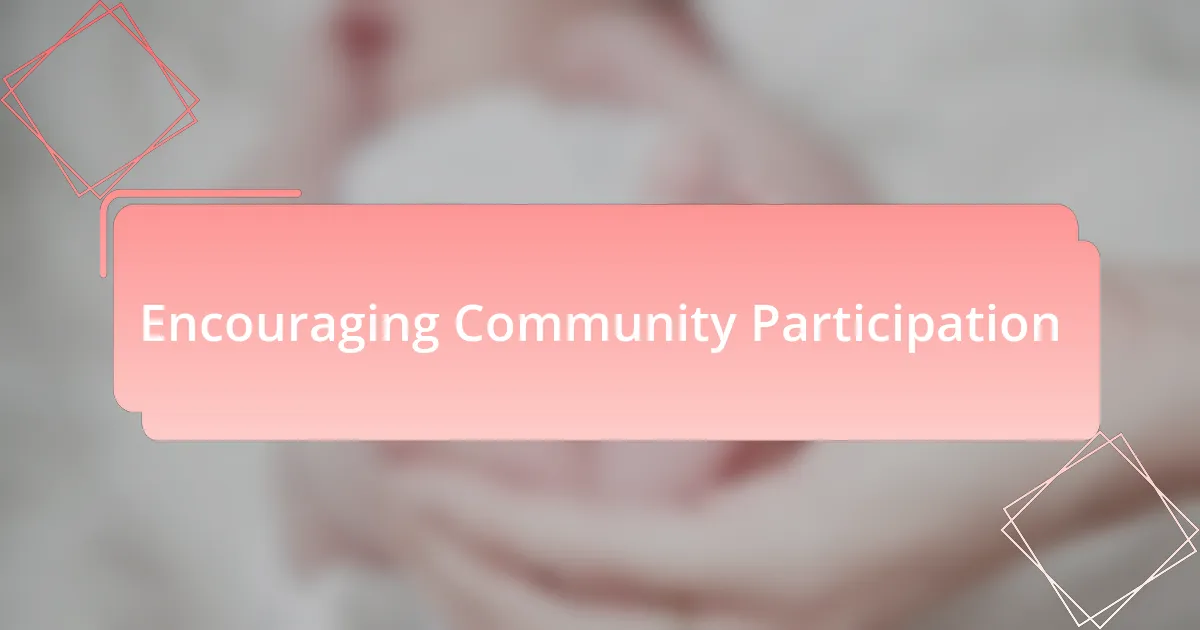
Encouraging Community Participation
Involving the community in celebrations can transform the atmosphere and foster deeper connections. I recall a time when I organized a neighborhood potluck for Mother’s Day, inviting families to bring dishes that represented their cultural backgrounds. It was amazing to see how food can open doors—not only to delicious flavors but also to the stories and traditions behind each dish. Many expressed, “I didn’t know you had that heritage!” I realized that sharing our culinary traditions brought us closer as a community.
Another great idea is to create participation opportunities that cater to various talents and preferences. For instance, during this potluck, we included a space for artistic expression where children and adults could create greeting cards for mothers in shelters. Witnessing the joy on their faces when they completed their cards was heartwarming. It made me reflect on how acts of kindness not only benefit others but also foster a sense of purpose within ourselves. How could we encourage everyone to participate and share their gifts in future celebrations?
To further encourage participation, consider involving local organizations or schools in your plans. I once collaborated with a nearby elementary school to organize a Mother’s Day art exhibition featuring students’ artwork inspired by their mothers. The excitement from both the students and their families was palpable. I noticed how they cherished this opportunity to showcase their creative expressions, sparking conversations about what motherhood means across different generations. Have you ever thought about the impact of collaboration in strengthening community bonds?